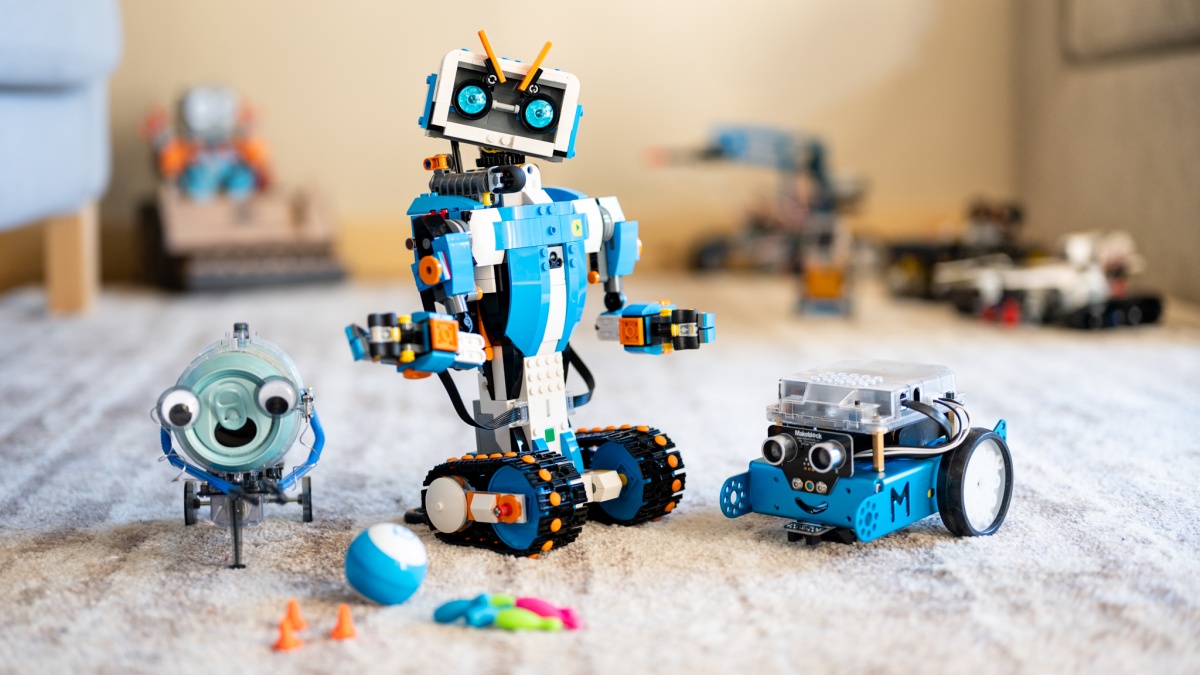Home Robotics Maker Inspired Projects For Building Your Own Robots
Home robotics has unlimited possibilities. Creating your own robot is a thrilling project that pushes technology and imagination, whether you’re an engineer or a beginner. Building robots at home, from line-following to humanoids, is educational and satisfying.
Home Robotics Maker Inspired Projects For Building Your Own Robots
This article covers a variety of inspired robotics projects and provides step-by-step instructions to help you realize your robotic fantasies.
1. Getting Started with Home Robotics
Robotics basics must be understood before starting projects. A control system, sensors, and actuators make up a robot. The control system—usually an Arduino or Raspberry Pi—is the robot’s “brain.” Sensors let the robot see its surroundings, while actuators like motors or servos let it move.
Start with a soldering iron, pliers, wire cutters, multimeter, and sensors and motors. You should also learn robot control programming languages like Python or C++.
2. Building a Simple Line-Following Robot
A line-following robot is a good starter project. A black tape line on a white surface is detected and followed by this robot using infrared sensors.
Materials Needed:
- Arduino Uno or similar microcontroller
- Two DC motors
- Basic plastic or aluminum frame
- Two infrared sensors
- Wheels: Two motor-compatible wheels
- Power: 6-12V battery pack
- Cables and Connectors
Step-by-Step Guide:
- Attach the motors and wheels to the basic frame to assemble the chassis.
- Mount the microcontroller: Secure the Arduino board to the chassis.
- Sensor Connection: Position the infrared sensors in front of the robot to detect the line.
- Connect Components: Connect motors and sensors to Arduino with jumper wires.
- Upload Code: Write a basic Arduino IDE application to control the robot’s motions using sensors. Sample codes are available online to get started.
- Check, calibrate: Test the robot on a track and alter sensor settings and code to improve performance.
- This project introduces robot navigation, sensor integration, and motor control, laying the groundwork for more advanced constructions.
3. Creating a Voice-Controlled Assistant Robot
The intermediate-level voice-controlled helper robot project uses speech recognition software to control the robot with spoken instructions. This project is great for AI and smart home enthusiasts.
Materials Needed:
- Raspberry Pi or Arduino Bluetooth microcontroller
- Bluetooth or USB microphone for speech recognition
- Motors and Servos: Function-dependent.
- Chassis: A good framing for components
- Speakers: Voice feedback
- Battery pack or direct power supply
Step-by-Step Guide:
- Set Up the Microcontroller:Install a speech recognition library like Google Speech API on your Raspberry Pi.
- Integrate Microphone: Plug the microphone into the microcontroller with the right drivers.
- Program Voice Commands: Write a Python script to recognize “move forward,” “turn left” commands.
- Enable Motion: Program motors and servos to respond to voice instructions on the Raspberry Pi.
- Build the Robot Chassis: Securely mount chassis components.
- Build the Robot Chassis: Debug and test the robot with varied commands to improve code accuracy.
- Test and Debug: This project explores robots and AI, improving your machine learning and human-robot interaction skills.
4. Designing a Smart Home Surveillance Robot
A smart home surveillance robot is a sophisticated project that patrols your home, detects motion, and streams live video. Integrating this robot with your home automation system adds security.
Materials Needed:
- Raspberry Pi or similar microcontroller
- Camera Pi or USB Camera
- PIR motion sensors
- DC motors with encoders for accurate movement
- Wheels and tracks: Terrain-dependent
- Powered by rechargeable batteries
- The Wi-Fi module
Step-by-Step Guide:
- Chassis: Build a solid basis that can navigate your home’s layout, flat or with little obstructions.
- Camera Installation: Attach the camera module to a pivoting mechanism for a wide view.
- Connect Sensors: Mount PIR sensors for multi-directional motion detection.
- Develop Control Software: Python script for video streaming and motion detection. Use OpenCV for computer vision.
- Implement Remote Control: Create a smartphone app or web interface for remote robot control, live broadcast, and manual navigation.
- Test and Improve: Try the robot in different household settings to make sure it responds to motion and broadcasts video well.
- This project requires advanced computer vision, network connection, and real-time data processing skills.
5. Constructing a Humanoid Robot
The difficult humanoid robot project is ideal for experienced roboticists. This articulated robot can perform dexterous jobs like humans.
Materials Needed:
- Advanced microcontrollers like Arduino Mega or Raspberry Pi
- Multiple high-torque joint servos
- A 3D print Parts: Custom limb and torso parts
- Accelerometers, gyroscopes, force sensors
- Powered by high-capacity batteries
- ROS software for sophisticated control
Step-by-Step Guide:
- Design the Frame: Create a humanoid frame with joint articulation using CAD software.
- Print and Assemble Parts: 3D print and assemble the limbs, torso, and head, ensuring all joints have enough motion.
- Put electronics in: Attach sensors, servos, and the microcontroller to each joint.
- Programme Moves: Develop complicated algorithms for balance, walking, and arm movements. Adjust movements to diverse terrains with machine learning.
- AI for Interaction: Use facial recognition and NLP to engage with humans.
- Test and iterate: Improve robot performance by testing mechanics and algorithms.
- Test and Iterate: Building a humanoid robot needs extensive robotics, mechanical, and AI knowledge. Devoted makers find it challenging yet gratifying.
Conclusion
Home robotics is a burgeoning industry with infinite creative and innovative potential. Building robots is a great way to learn, experiment, and have fun. Each project teaches you skills you can use in future projects and even lead to a robotics profession.


